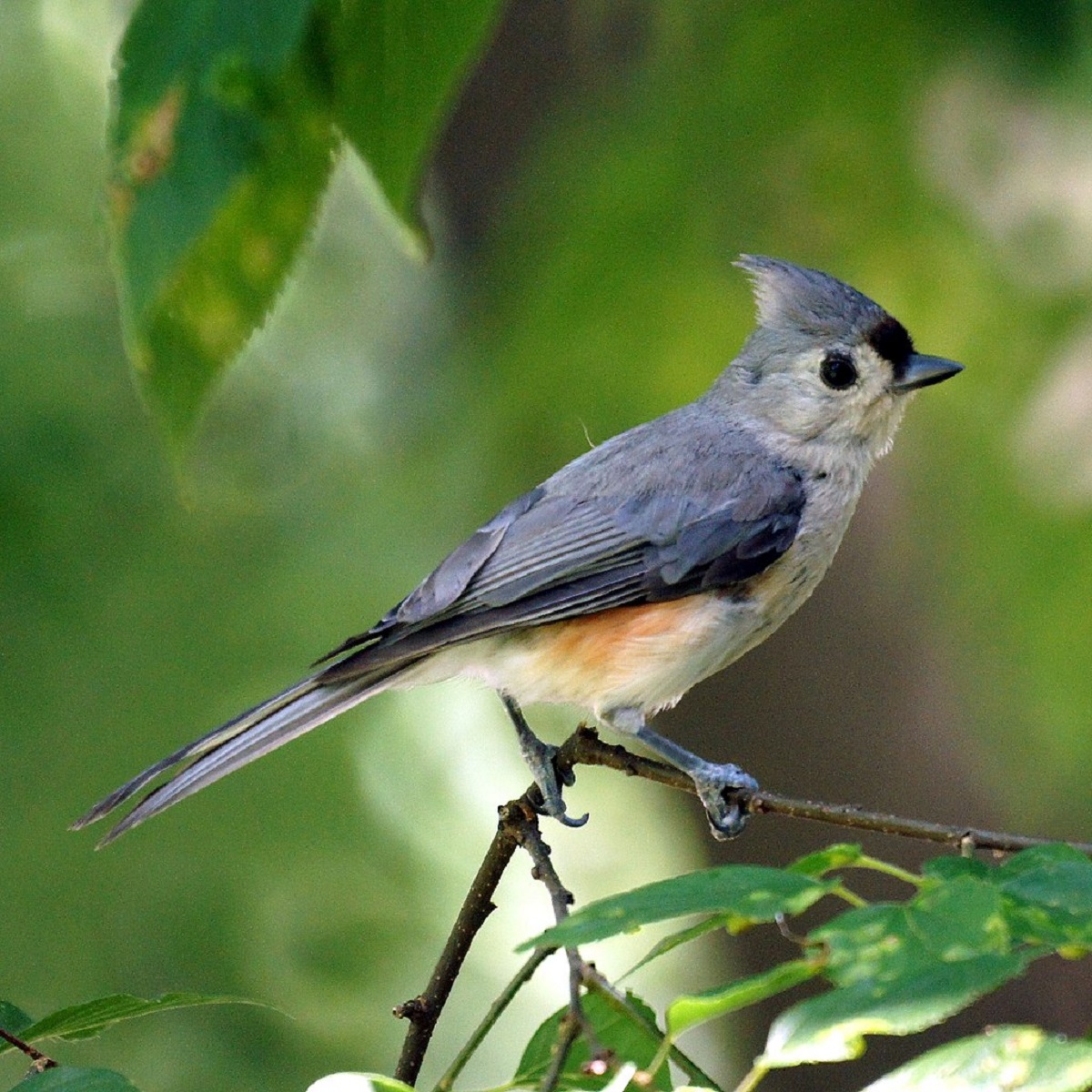The tufted titmouse (Baeolophus bicolor) is a small North American songbird from the tit and chickadee family (Paridae). It is known for its multiple vocalizations, especially its signature peter-peter-peter call. The species once included the black-crested titmouse as a subspecies, but that is now is considered a separate species.
The tufted titmouse is a talented North American songbird. This little bird has quite a few sounds in its repertoire, but none of its vocalizations are as instantly recognizable as their peter-peter-peter song.
Quick and bold, this gray bird is a frequent visitor to backyard bird feeders in the eastern United States. They’re so fast that sometimes their peter-peter-peter bird call is the first indicator that the flash of gray in your garden is the tufted titmouse.
In this article, we’ll talk about the vocalizations of the tufted titmouse, along with information about other songbirds in North America whose bird calls are often confused with the tufted titmouse song.
What Does The Tufted Titmouse Call Sound Like?
From a loud, clear whistle to scolding chitters, this little bird has quite a big sound.
While they are sometimes confused with chickadees and warblers, the tufted titmouse call notes are very distinct. With a little practice, backyard bird enthusiasts can learn to identify the delightful titmouse by its bird call.
Many bird lovers are familiar with the peter-peter-peter bird call the tufted titmouse is known for, but that’s not the only sound these vocal birds make. The tufted titmouse call has several variations, which they use for mate selection, defining territories, and warning against predators. From the sweet, clear whistle song to the raspy ay-ay-ay and the tuti call, tufted titmouse vocalizations prove this little singer has more than one note to sing.
The tufted titmouse (Baeolophus bicolor) sings not only to attract a mate but as a way to communicate throughout the year.
Song types are changed depending on the situation. Male tufted titmice will even sing while flying and perching from many different areas, giving the appearance of a large territory with a dense population. Female tufted titmice also sing, duetting with their mate and communicating when a predator is nearby.
The vocal prowess of the tufted titmouse wasn’t always fully appreciated until recent years. In the early 1900s, the tufted titmouse was thought to have a limited repertoire with very little variation. Now sites like Xeno-canto and the Cornell Lab of Ornithology are full of tufted titmouse songs.
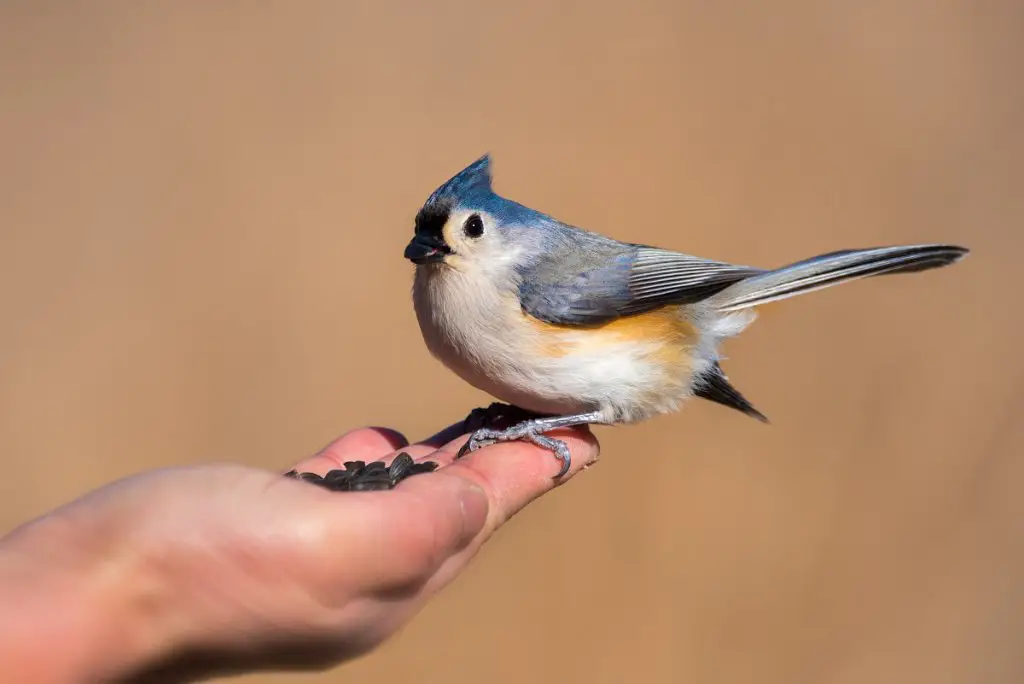
What Key Features Identify A Tufted Titmouse?
The tufted titmouse is a small gray bird with a large crest on atop its head. The upperparts are slate gray, and the underparts are light buff brown to white. They have black eyes and beaks, and a small black streak on the front of their crest. Orange patches color their flanks in a single light streak on each side.
Male and female titmice are similar in color and markings. The female tufted titmouse is slightly lighter overall, but similar in size. Tufted titmouse pairs stick close to each other, flitting quickly from branch to branch in search of insects.
Titmice are part of the family Paridae, which includes chickadees and other tit birds. Titmouse pairs like to hang out in mixed flocks with similar songbirds, making identifying them a little more challenging. Black-capped chickadees, Carolina chickadees, Carolina wrens, and nuthatches often flock with titmice. The titmouse’s prominent crest is one surefire way to identify them in addition to their song.
What Does A Black-Crested Titmouse Sound Like?
The black-crested titmouse song shares some similarities with the tufted titmouse song. The black-crested titmouse will occasionally use the peter-peter-peter the tufted titmouse is known for, but its other bird calls are unique. A monosyllabic peer-peer-peer is the most common, along with a few other songs it sings loudly from the trees.
The black-crested titmouse (Baeolophus atricristatus) looks almost identical to the tufted titmouse. The thick black streak covering most of their crest helps separate these similar songbirds in their shared Texas and Mexico ranges. But the song types of the black-crested titmouse can help bird watchers tell the two apart with this quick little bird won’t hold still long enough for a physical identification.
The bird call of the black-crested titmouse is usually higher pitched than the tufted titmouse. Black-crested titmice also favor single syllables with a faster speed. The high-pitched seet-seet-seet is mixed with whistles, peer-peer-peer, and raspy chatters. Both males and females sing, just like other titmice.
Where Does The Tufted Titmouse Live?
The tufted titmouse is found in the eastern United States. From east Texas to Maine, their range spreads as far north as southern Ontario and Montreal, Canada. They live in deciduous forests with plenty of open space and lots of old and decaying trees. Tufted titmice are also a common sight at backyard bird feeders, though they usually come in pairs joined up with mixed flocks.
Tufted titmice are non-migratory, but their range has expanded quite a bit in the last hundred years. Now a common sight in upper New England and along the Canadian border, their northern range previously ended in New Jersey. The increase in backyard bird feeders, as well as climate change, is believed to be a big part of their range expansion.
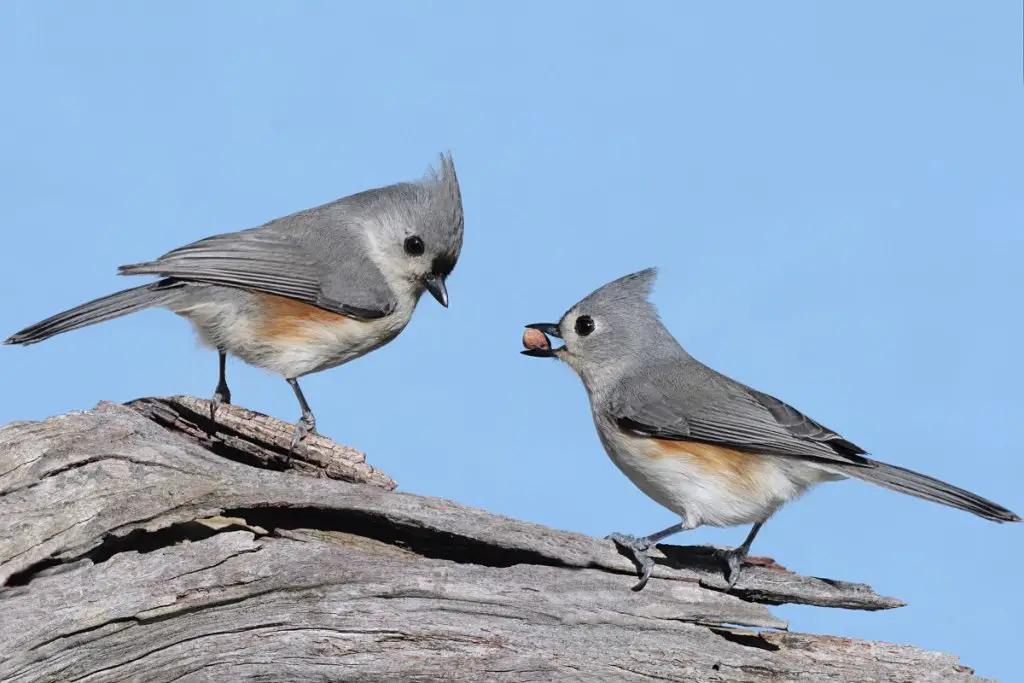
When Is The Titmouse Breeding Season?
The tufted titmouse breeding season is from March to May. Black-crested titmice have a longer season, breeding from late February to July. Both titmouse species have 1-2 broods a year despite the difference in breeding season length. Young birds from brood one are known to help raise nestlings from the second brood.
Titmice are cavity nesters, building their nests in tight spaces with only one entrance. This helps protect young birds from predators like birds of prey, raccoons, and cats. A single entrance in a deep crevice also protects nestlings from the elements. Titmice often use old woodpecker holes and natural cavities in dead and fallen trees to build their nest as they are unable to excavate the holes on their own.
Titmice will also readily use nest boxes hung near wooded areas or bushes. You can help them by choosing a 4-sided nest box with a small opening of 1 1/4 inches. Larger openings allows bigger birds to take over the nest box. Hang nest boxes early and leave them up year-round to give the pair a place to raise their young and to roost during the colder months.
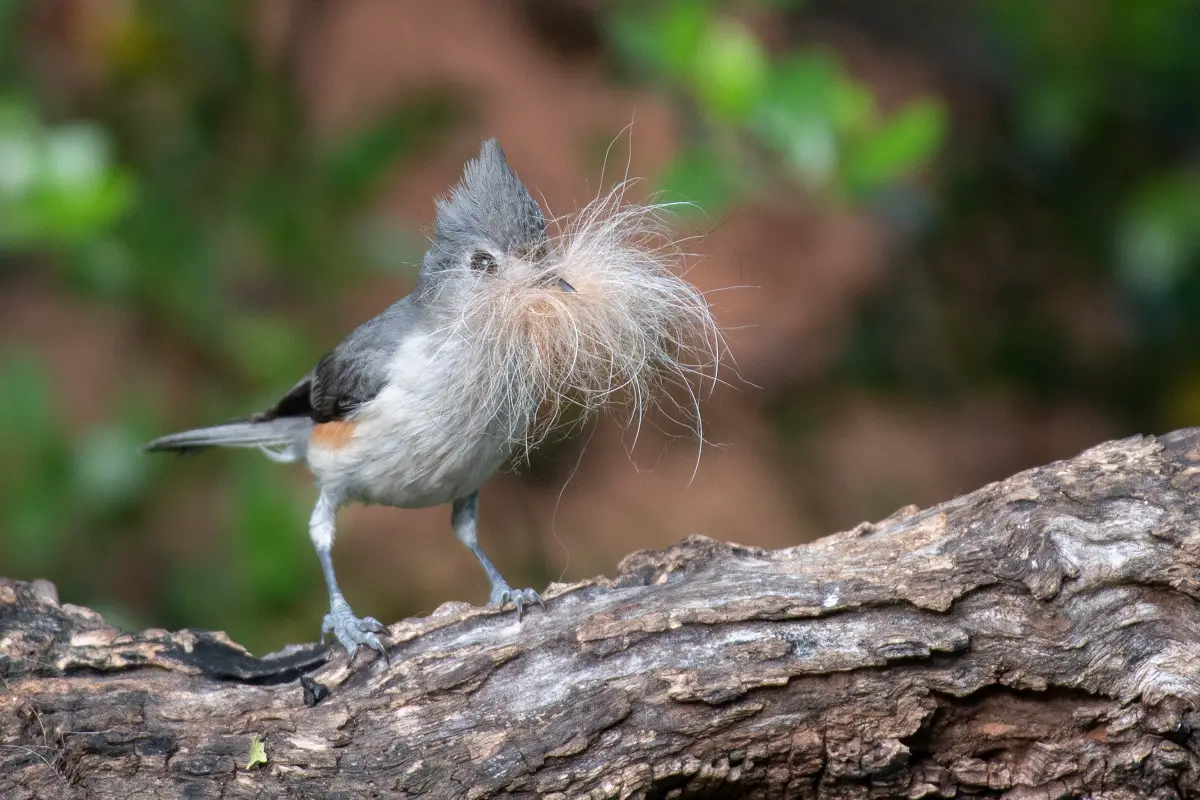
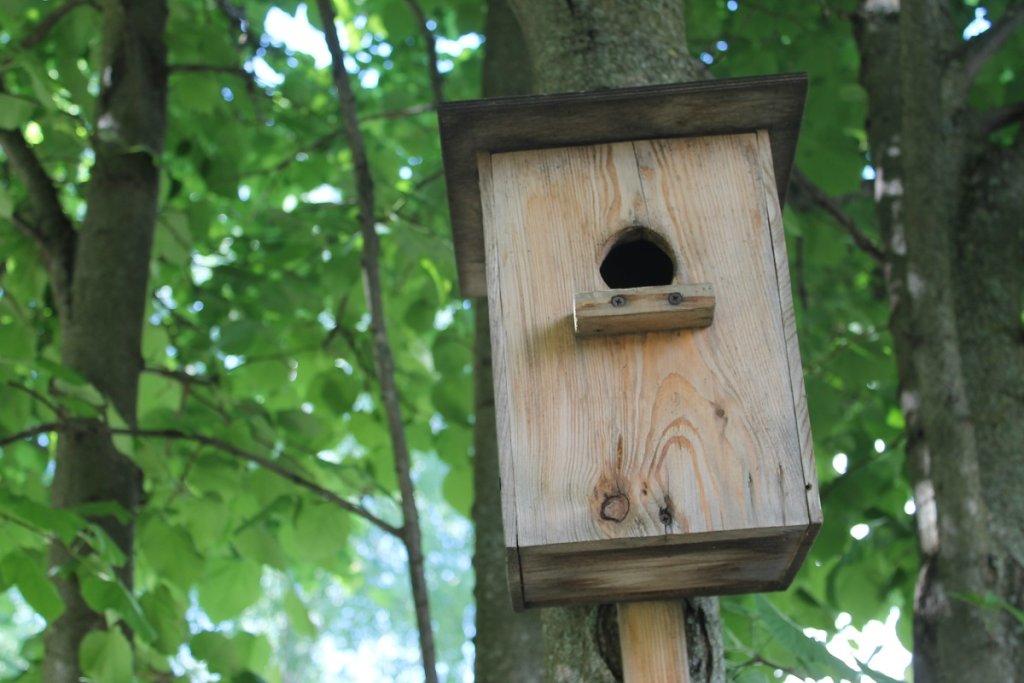
Titmice love soft nesting material, especially animal hair. They’ve even been known to pluck the hair from living animals like raccoons! An unused suet feeder hung in a tree is a great place to stuff short dog hair shed if you want to offer some for your backyard birds. Just make sure to use short hair as longer hairs can wrap around legs, beaks, and necks, injuring songbirds.
Once thought to have a more limited song type, the tufted titmouse song is now known to be filled with quite a bit of variation. Their vocalizations serve many purposes. From wooing a mate to scaring off other males to avoid a physical fight these little birds have plenty of vocal talent. Now that you know the tufted titmouse call, you’ll be able to identify this swift flyer long before you see them!

